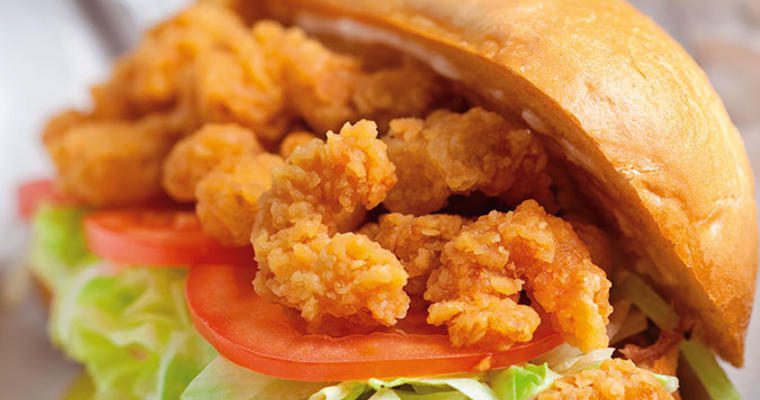According to USDA research, on any given day half the country eats a sandwich. That’s about 150 million sandwiches. Operators already know sandwiches are a top-selling menu item, but standing out from the crowd can prove difficult. Staying on trend and creating menu differentiation is key to capturing sandwich sales and attracting customers.
“There is huge demand to create something unique, with a higher level of creativity than what we’ve seen before,” says Gordon Food Service Corporate Consulting Chef Gerry Ludwig, CEC.
This is true across all restaurant segments, and two styles of sandwiches are standouts.
“French dips and New Orleans-style po’ boys are top of the list, trendwise,” Ludwig says, “at fast-casual and fine-dining restaurants across the country.”
Vive les French dips
From time immemorial, the French dip has been the classic hot sandwich: thinly shaved roast beef (or last night’s leftover prime rib) on crusty bread with a bowl of jus for dipping.
“It’s pretty darn delicious,” Ludwig says, “but there’s a lot of room for creativity.”
Cochon Volant in Chicago agrees. Their lunch menu features an entire section of “Fine French Dips,” from a traditional prime-beef dip with confit onion, provolone, and horseradish to an unconventional duck-confit dip with Roquefort, foie-mayo, and confit cherries.
An innovative French dip can, and should, use proteins from your larder. These are sandwiches of delicious leftovers. Using braised meats makes sense: slowly cooked, spoon-tender, and melt-in-your-mouth, with the braising liquid creating an instant dipping broth. Adding rich melted cheese melds everything together.
Belcampo Meat Co. in California takes the French dip to a new level with the French-dip éclair. As you might imagine, it makes use of an oversize pâte à choux “bun” that’s split and toasted before being filled with roast beef and horseradish mayo. Choux dough is one of the easiest pastry doughs to prepare, far simpler than a yeasted roll and it requires no special ovens.
Po’ boys for high rollers
Harking back to a long-ago streetcar strike in New Orleans, po’ boys were born of the need for cheap, filling sandwiches. They often included bits of roast beef and oysters or, as money dwindled, fried potatoes flavored with gravy.
The Little Jewel of New Orleans in Los Angeles nods to this with a french-fry-filled po’ boy smothered in “debris gravy”—it’s the cheapest po’ boy on the menu. More opulent offerings include: a surf-and-turf po’ boy stuffed with oysters and roast beef, or a double wagyu-beef po’ boy with Gruyére and mushroom gravy.
Big and Little’s, a three-unit fast-casual operation in Chicago, serves at least a dozen varieties of less traditional po’ boys, all on toasted French rolls. Their pork-belly po’ boy layers crisp pork belly, lettuce, pickles, hot sauce, and maple syrup, while the fried-shrimp version melds Vietnamese flavors: pickled vegetables, cilantro, special sauce, lime juice, and sesame seeds.
At Chicago’s The Promontory, a po’ boy of pulled pork and fried clams with mustard rémoulade, and coleslaw combines dynamite flavor and texture. Fahlstrom’s Fresh Fish Market, also in Chicago, specializes in house-smoked seafood. Their po’ boy of smoked sturgeon, lox, trout, shrimp, and spicy capicola is finished with a drizzle of cider vinaigrette.
These sandwiches speak to the ingenuity of chefs and operators to reimagine traditional sandwiches with the understanding that all ingredients are fair game as long as they’re thoughtfully put together. French dips and po’ boys combine comfort-food appeal with over-the-top layers of flavor, a winning combination that’s miles above the ordinary sandwich.











